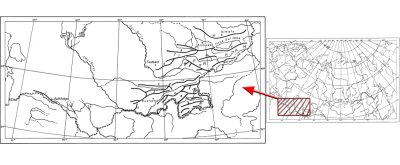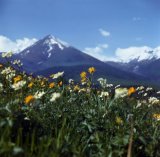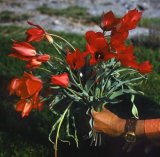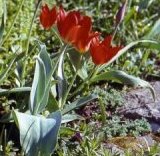 |
QUICK SEARCH
MO PROJECTS:
Africa
Asia/Pacific
Mesoamerica
North America
South America
General Taxonomy
Photo Essays
Training in Latin
America
MO RESEARCH:
Wm. L. Brown Center
Bryology
GIS
Graduate Studies
Research Experiences
for Undergraduates
Imaging Lab
Library
MBG Press
Publications
Climate Change
Catalog Fossil Plants
MO DATABASES:
W³MOST
Image Index
Rare Books
Angiosperm
Phylogeny
Res Botanica
All Databases
INFORMATION:
What's New?
People at MO
Visitor's Guide
Herbarium
Jobs & Fellowships
Symposium
Research Links
Site Map
Search
ORNAMENTAL PLANTS IN THEIR NATURAL HABITATSCentral Asia
Central Asia in the sense of this book is the "Soviet Middle Asia" of the FSU, of Hollis and Brummitt (1992) and Russian geographical maps. It lies between the Siberian Altay mountains in the northeast and the Caspian sea to the west. The region includes the republics of Kyrgyzstan, Tajikistan, Turkmenistan (or Turkmenia), Uzbekistan and southern Kazakstan. Two great rivers, the Amu-Darya and Syr-Darya, the "Oxus" and the "Yaksart" or "Jaxartes" in the ancient tongues, flow through this region of where civilization arose. These rivers played important roles as trade routes from India via the Caspian and Black seas to Europe. The ancient provinces of Sogdiana (Tajikistan) and Bactrya (southern Turkmenistan) were known both in the East and the West. Central Asia extends 1,300 km (800 miles) from north to south and 2,400 km (1,500 miles) from west to east. It consists of the Turanian Lowlands that gradually rise in the southeastern part to high mountain borders. Central Asia is very impressive in its dimensions and contrasts. It has
Central Asia has so far yielded a relatively small number of ornamental species to world gardening, although it is reported to have 8,000 species of vascular plants (Kamelin, 1990). There are more than 60 endemic genera and numerous endemic species that include a large number of potentially ornamental herbs and woody plants, mostly shrubs. Although these attractive plants can be found in diverse vegetation types and habitats, the majority grow in the mountains. The foothills and lower montane zones support various types of desert vegetation and here most species grow in spring as ephemerals (annuals) or ephemeroids (perennials). Deciduous shrubby thickets or sparse forests characterize mountain slopes and consist of juniper (Juniperus) and various steppe formations, together with tall plants of the carrot family (Apiaceae). Deciduous forests include maple (Acer), apple (Malus), common walnut (Juglans regia) and form isolated stands. Coniferous forests, dominated by Schrenk's spruce Picea schrenkiana and fir Abies semenovii, are even less common. The high-altitude vegetation consists of meadows, steppes and cushion subshrub communities. As a whole, the flora of Central Asia is of great interest as a potential source of new woody and herbaceous plants. |
||||
| ORNAMENTAL PLANTS FROM RUSSIA |
© 1995-2025 Missouri Botanical Garden, All Rights Reserved
4344 Shaw Blvd.
St. Louis, MO 63110
(314) 577-5100
Technical Support



